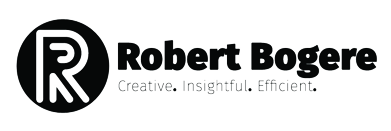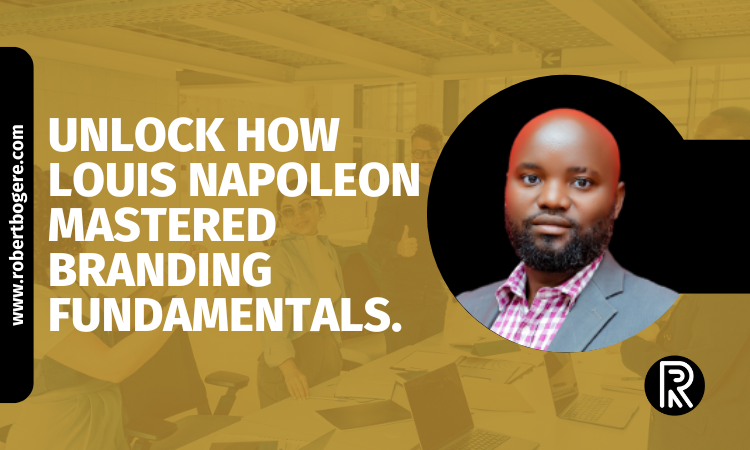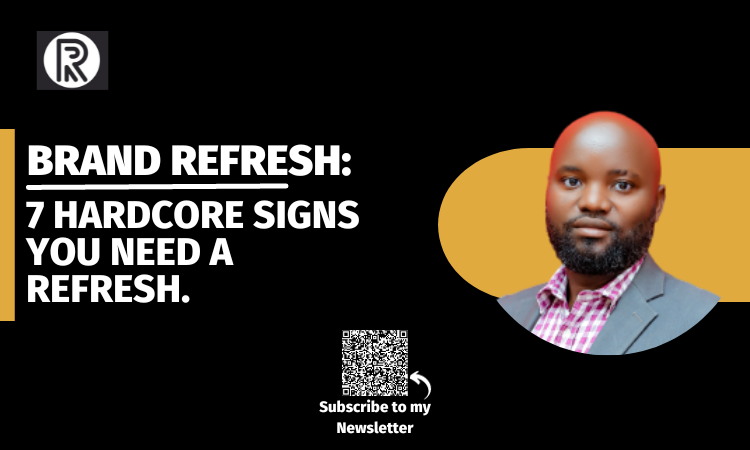Last Updated on Fri-Sep-2024 by Robert Bogere
The branding strategy behind Louis Napoleon Bonaparte’s leadership unstoppable rise.
Napoleon Bonaparte is known as a greatest military strategists, but his legacy goes beyond fighting techniques.
To remain at the top, he mastered the art of branding—a business concept that resonates today as it did in the 19th century.
In a period without modern marketing, Napoleon knew the power of identity, brand story, and symbolism in maintaining his leadership.
In this article, It’s about how Napoleon’s leadership is analyzed through branding, showing you lessons for today’s founders and brands.
Discover: Don’t know where to start from with your brand strategy? Check up this.
The foundation of Louis Napoleon’s brand
1/ Establishing brand authority
Napoleon’s rise to power was fast. From an artillery army officer to the Emperor of France, his rise was marked by knowing how to build and project brand authority. Which current leaders are struggling with nowadays.
He grew a solid image in his career, which was good in gaining loyal followers, his soldiers respect, and the French citizens.
His military accomplishments, like the Italian Campaign (1796-1797), he led French forces to victories and played an important role in shaping his brand as an unstoppable leader.
His tactics to take control and get results made him a hero in the eyes of French citizens. His success laid the foundation for a brand rooted in authority, decisiveness, and military skills.
2/ Analogy
Napoleon was aware of the power of symbols in boosting his leadership brand. He used symbols representing his rule and the French Empire.
The use of the French tricolor, an analogy of a Revolution, helped him relate with the values of the new Republic while he consolidated power.

The use of an eagle as the emblem of his empire was a nod to the Roman Empire, indicating strength, continuity, and a connection to imperial greatness.
His own imperial coronation in 1804, where he crowned himself Emperor, is a good example of his mastery of analogy.
Removing the crown from Pope Pius VII and putting it on his head, he sent a positive message of his authority being self-made and supreme—accountable to no one but himself. That’s what authority calls for. You got it?
This self-coronation became a basis of his leadership brand, boosting his image as a ruler who showed the ideals of the Revolution and the new Empire. Ruler is one a brand archetype.
3/ Vision for France
His brand was a vision for a united and powerful France. He showed himself as a leader who’ll lead to stability, prosperity, and glory to a country that had been through years of revolutionary challenges.
This vision is familiar to a modern business’s mission statement—this defined his leadership and offered an aspirational goal resonating with his loyal followers. Aspirational is a core element in a mission statement.
His legal reforms, like the Napoleonic Code, was a core part of his vision. The Code maintained laws across France and served as a great legacy of his rule.

This code not only represented a step toward equality and justice but boosted his brand as a reformer who brought law, order and advancement to France.
He adapted his leadership with a broader vision. Here Napoleon ensured his brand would make it beyond his military achievements.
As you go through how Napoleon Bonaparte mastered branding, how is your current brand performing? Get a FREE brand audit today and know the core areas holding you back from achieving your brand goals.
His leadership as a branding strategy
1/ Consistency in his image
The positive aspect of Napoleon’s leadership was his consistency in having a consistent image.
Like any other modern brand today, he knew the importance of maintaining his image across—from the uniforms to his public appearances and communication.
His choice of the military uniform as a standard attire, even before being an Emperor, it was a good decision boosting his brand image as a leader of the people and action man.

His consistency in appearance helped him create a solid and memorable brand associated with leadership, discipline, and military excellence.
His bulletins from the fighting field, which were published in newspapers, were another tactic to maintain his brand image. How are you maintaining your brand image?
These bulletins, written in a style, communicated his vision and achievements to the French citizens. Controlling the story and projecting his desired brand image, he strengthened his brand as a victorious leader.
2/ Story control
His ability to control the story of his leadership was a core to maintaining his brand. He recognized the power of media and communication in shaping public perception.
From his early days of military career, He used bulletins, reports, and newspapers to form the story of his accomplishments, pointing out his role as a decisive factor in victory.

The example of this was his return from the Egyptian campaign in 1799. His campaign had mixed results and ended in a retreat but he managed to get it as a victory, stressing his earlier victories and downplaying the previous setbacks.
This kind of story control helped him return to France as a hero, ready to take power in the coup of 18 Brumaire, which led to his role as First Consul and later Emperor.

He endorsed art and monuments to cement his brand image in the public awareness. The Arc de Triomphe, commissioned in 1806, intended to celebrate the French army’s victories and serve as a symbol of Napoleon’s glory.
Shaping his story through art and media, Napoleon stressed his brand was one of magnificence.
3/ Charisma and public perception
His charisma was an element of his leadership brand. He had an ability to connect with his soldiers and the followers, inspiring loyalty and devotion.
This personal attraction was an asset, like the charisma of current CEO who can solidify a business’s workforce and attract followers.
His charisma was his return from exile in Elba in 1815. Marching toward Paris, he confronted royalist troops who were sent to arrest him.

Instead of showing humbleness, he walked up to the soldiers, opened his coat, and declared, “If there’s one among you who wants to kill his Emperor, here I am.” Can you manage that?
The troops, moved by his boldness and rallied to his side. This shows how his brand—rooted in his charisma and connection with his followers—could turn a defeat into a victory.
His speeches and proclamations showed his bond with his soldiers, referring to them as “companions in arms” and sharing their shared glory.
This helped to solidify his brand as a leader who was not only powerful but connecting to those he leads, further boosting his influence and control.
Discover: Want to know what is involved in carrying your brand audit? Read about these effective brand audit tips here.
Rebuilding his brand
His ability to adapt his leadership was important in his rise from a revolutionary leader to an Emperor.
He made himself with the revolutionary ideals of liberty, equality, and fraternity, which helped him get support in the post-Revolutionary chaos.
While at power, Napoleon shifted his brand to one of an imperial ruler, bringing together stability, order, and continuity with the past.

This shift was illustrated in his coronation as Emperor in 1804. Crowning himself, he depicted as a leader who was both a product of the Revolution and a restorer of traditional authority.
Being revolutionary and emperor—allowed him to appeal to the broad French citizens, from former revolutionaries to monarchists.
His ability to balance these two identities shows a level of adaptability, an element of any brand seeking to remain relevant in changing period.
His brand evolution from a revolutionary general to a sovereign Emperor is an indicator of his creative thinking and knowing of the importance of reinventing his brand image.
Managing France crises
No any brand remains unchallenged, and he faced many crises during his period. How he managed these crises is a part of knowing his leadership.
The Russian campaign of 1812 is a good benchmark. This campaign ended in a retreat as one of Egypt, with the main army crushed by the harsh winter and Russian resistance.

Despite such challenges to his reputation, he focused on his resilience and the loyalty of his remaining troops.
He returned to France and rebuilt his army, showcasing himself as an indomitable leader who can recover from setbacks.
This crisis approach, focusing on resilience and determination, helped him keep his leadership brand in the face of defeat.
His 100 Days in 1815 when he returned from exile and regained power before his final defeat at Waterloo is a good illustration of managing such crises. During this period, he showed his ability to adapt and manage crises.
He attempted to reform his leadership style, agitating to liberal policies to gain support. Though he was unsuccessful, such period showed his willingness to adjust his brand in response to changing trends.
Changing his leadership style
His leadership changed over time, reflecting his understanding to adapt his brand and maintain his position.
In his career, he was known for his involvement in military campaigns and hands-on leadership. He led his troops in person, an approach that boosted his brand image as a fearless, capable leader.

With an expanded empire, his leadership became centralized and bureaucratic. He delegated more tasks to his marshals and administrators while focusing on governance and strategy of his empire. This allowed him manage his complexities.
As Napoleon improved his leadership strategy, you can also refine your brand. Claim your FREE brand audit today and transform your brand potential.
Lessons for modern leaders and brands
His leadership brand offers insightful lessons for today’s leaders and businesses, especially in branding industry.
Lesson 1: Building a solid foundation
One takeaway from his approach of things is creating a solid foundation for his brand. He built his leadership on three (3) pillars of military success, authority, and a vision for France.
As a leader, defining and communicating the core elements of your brand from the beginning is paramount.

This includes creating your brand mission, vision, values, and principles guiding your brand identity and strategy.
This means putting a groundwork reflecting what your brand stands for and aims to achieve in the future though don’t be rigid. You need to also be adaptive.
Such foundation becomes your start off point upon all your branding activities, helping you create a brand story resonating with your would be target customers.
Lesson 2: Maintaining brand consistency
His success in maintaining an image across underscores the importance of consistency in branding. Whether it was through his selection of attire, public appearances, he ensured his brand was memorable and coordinated with his brand story.

For modern brands like yours, consistency is key in building your brand trust and recognition.
This means ensuring your brand touchpoints like logos, messaging, visual identity, website, social media platforms, and customer experiences—are matched and consistent.
A matched presence helps to boost your brand identity and makes it easy for your customers to connect with and remember your brand.
Lesson 3: Adapting to change
Leaders are rigid to change but his ability to adapt his brand in response to changing situations offers a lesson for modern leaders and brands today.
As market trends and consumer preferences change, your brand must adapt and reinvent to stay relevant.

His shift from a revolutionary leader to an emperor shows the importance of being flexible and the ability to pivot.
If your brand is adaptable and open to change, it’s positioned to pass through its challenges, crises, and seize new opportunities.
This could be rebranding activities, updating your products/services, offerings, or shifting your brand focus to meet changing market demands.
The focus is to balance adaptation with the important elements defining your brand and ensuring your brand identity remains intact as it changes.
Lesson 4: Managing crises with resilience
His leadership is an indicator of resilience in crises. The ability to bounce back from Russian setbacks and rebuild his army, showcases the value of resilience in maintaining a solid brand.
Current leaders, managing crises is good in protecting and preserving your brand reputation.

This involves attacking challenges, communicating with stakeholders, and focusing on recovery initiatives to boost your brand commitment to its values and mission.
Brands showing resilience during tough times are more likely to retain loyal customers and emerge from crises.
Discover: Curious to know effective branding strategies for your brand? Find out more here.
Napoleon branding Conclusion
His leadership was described by more than just military prowess. It’s marked by knowing of what we now recognize as branding.
Maintaining his brand image, controlling his story through bulletins, and adapting to changing situations, he stayed at the top of his leadership for long in his career.
His strategies offer lessons for current leaders and brands, stressing the focus of building a solid brand foundation, maintaining consistency, adapting to change, and managing crises with resilience.
Applying his lessons, as a leader, you can create powerful identity that resonate with your target customers and position yourself differently.
His legacy reminds me that branding is not about marketing—it’s about leadership, vision, and the ability to inspire and influence others.
As you reflect on his tactics to leadership and branding, observe how these his principles can be applied to your brand and leadership style.
1/ What are the core elements of your brand?
2/ How can you ensure consistency in your brand messaging and image?
3/ Are you prepared to adapt to changes and manage crises with resilience?
That’s for you to reflect on. Providing answers to the above questions, you can build a brand that not only achieves success and growth but leaves an impact, much like Louis Napoleon Bonaparte did.
Ready to transform your brand like Napoleon did with his leadership? Start with my FREE brand audit to find and address the areas holding your brand back.
Discover (3) core areas holding your brand back from attracting Top-tier clients
Transform your brand potential with a complimentary, no-obligation audit. In a few days, we’ll analyze your current brand situation and identify 3 critical areas where improvements can be made.
Whether it’s your brand positioning, messaging, or brand perception, this audit will give you insights to help you attract top-tier clients you deserve.
What will I get from your offer?
1/ A detailed assessment of your brand strengths and weaknesses.
2/ Recommendations on how to improve your brand appeal to start attracting top-tier clients.
3/ A roadmap outlining your next steps to transform your brand within 90 days.
Why is it FREE?
We believe in the power of branding, and we want to give you a taste of what our proven strategies can do for your business.
This audit is our way of demonstrating the value we bring, with no strings attached.
How do I get started?
Click here to schedule your FREE audit. It’s time to take your first step toward building a solid brand.




